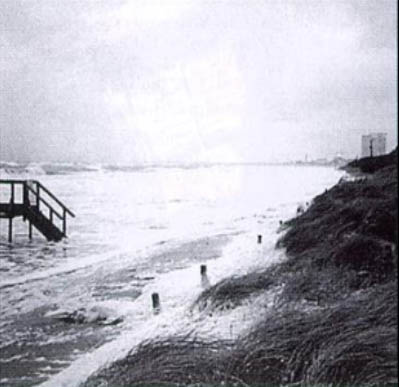| Rostock - Germany |
| Complete description
of case study |
PHOTO OF THE SITE
 |
|
CASE STUDY
| Title | Rostock |
| National level | Germany |
| Regional level | Mecklenburg-West Pomerania |
| Local level | Rostock |
ABSTRACT
|
Rostock, situated north of Berlin, is one of the biggest cities in the northeast of Germany. Beaches only exist in this area thanks to the presence of the cliffs and the sediment that is being eroded from them. There are no plans for building more hard coastal protection works, because they have turned out not to be sufficient for protecting the coast at certain locations. However, repeated nourishments are carried out, and sometimes, after a heavy storm surge, the recovery of a dune or dike is necessary. The nourishments succeed in stopping the coastline from receding. Altogether, the measures taken ensure the safety of the hinterland. In addition, the beaches are restored by the nourishments, which stimulates the tourism and recreation function. Safety should always be maintained. Within this keynote however, nature should be allowed to go its own way as much as possible. The coast is, therefore, maintained in a dynamic way. |
BASIC INFORMATION
| Coastal characteristics |
|
| Policy options | Hold the line, Limited intervention |
| Socio-economic activities | Industry, transport and energy, fisheries and aquaculture, tourism and recreation, nature conservation and urbanisation. |
| Engineering techniques | Seawall, revetment, groins, nourishments and dune revegetation |
SOURCE
| Name | Paul
Sistermans Odelinde Nieuwenhuis |
| Institution | DHV group |
| Address | Laan
1914 nr.35, 3818 EX Amersfoort PO Box 219 3800 AE Amersfoort – The Netherlands |
| Telephone / fax | +31 (0)33 468 37 00 / +31 (0)33 468 37 48 |
| paul.sistermans@dhv.nl odelinde.nieuwenhuis@dhv.nl |